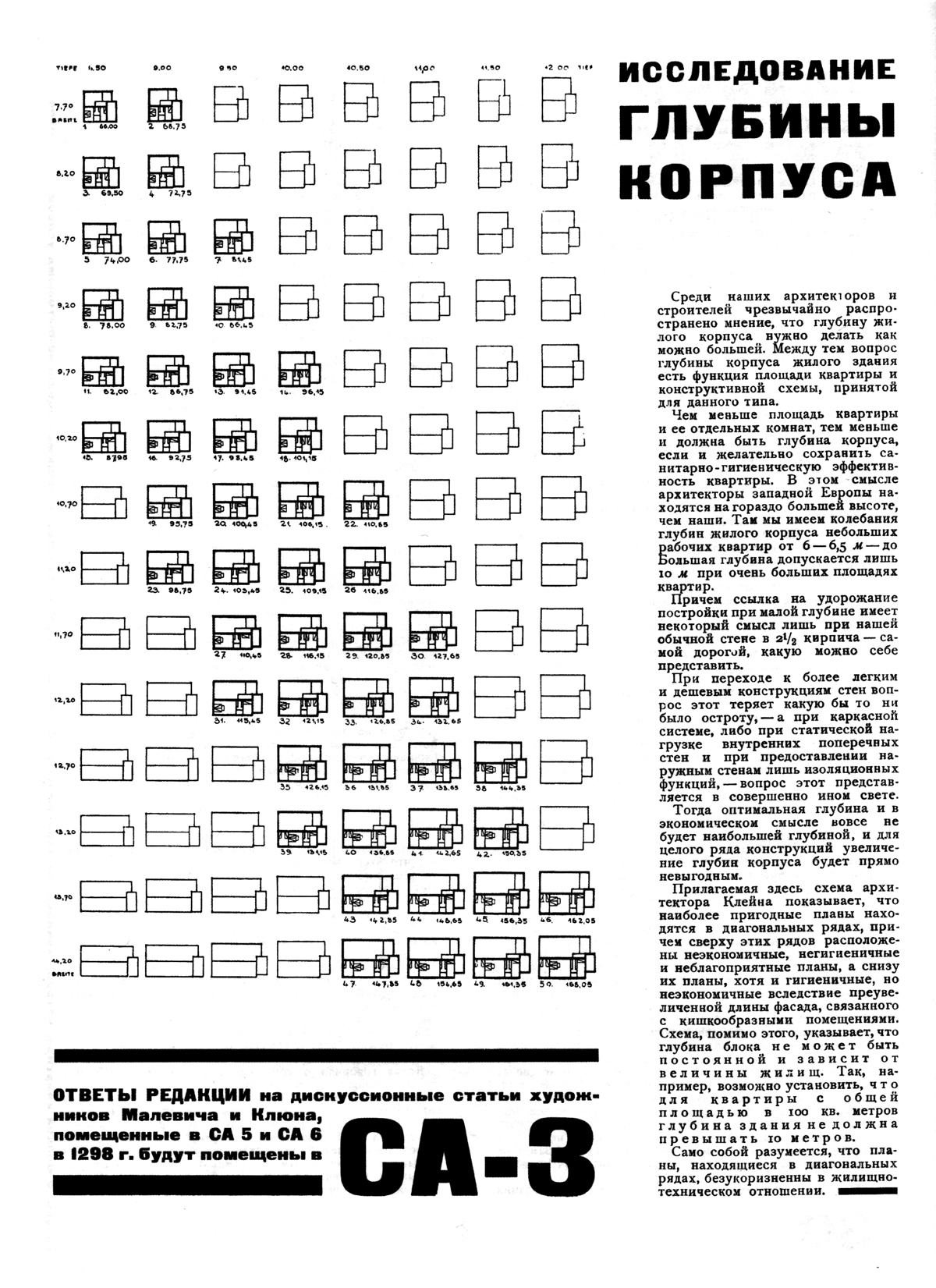Standardisation has been one of the main themes of the architectural debate in the post revolutionary context on Soviet Russia, strongly influenced by the contemporary international debate. Constructivists, and in particular the OSA group and the Sovrmennaja Arkhitektura magazine, identified in the issue of creating modular standardised components which could be industrially produced a key solution for providing dwelling to the increasingly urbanised soviet population. A great number of studies and prototypes was then developed to identify standard types which could serve the need for different solutions. In general, the research was associated with a strong reform of the everyday life organisation (Novy Byt) in terms of strong collectivisation, which lead to the adoption of the model of the communal house (Dom Kommuna). The Narkomfin is probably the most important experiment in this field.
As Georgi Vegman wrote in [SA][t13] 1929/4:
“The individual bourgeois apartment is no longer appropriate for new dwelling relations, based on other premises than the unified patriarchal family with its individualistic small conduct. The economic conduct of the family of the worker (nutrition, cleaning, washing) as well as the education of children, their care and control and the fulfilment of the cultural and sport needs of workers and children, must and can be collectivised, that is, can be produced on a collectivistic basis. Therefore all those rooms that for their functional destination and their character must serve entire collectives and not only single individuals must be reshaped into corresponding highly collectivised premises: the canteen, common resting rooms, reading rooms and libraries, gyms, child care rooms and nurseries, etc.; single individual rooms are the sleeping cabins, restrooms, rooms for individual use and for scientific work”.
